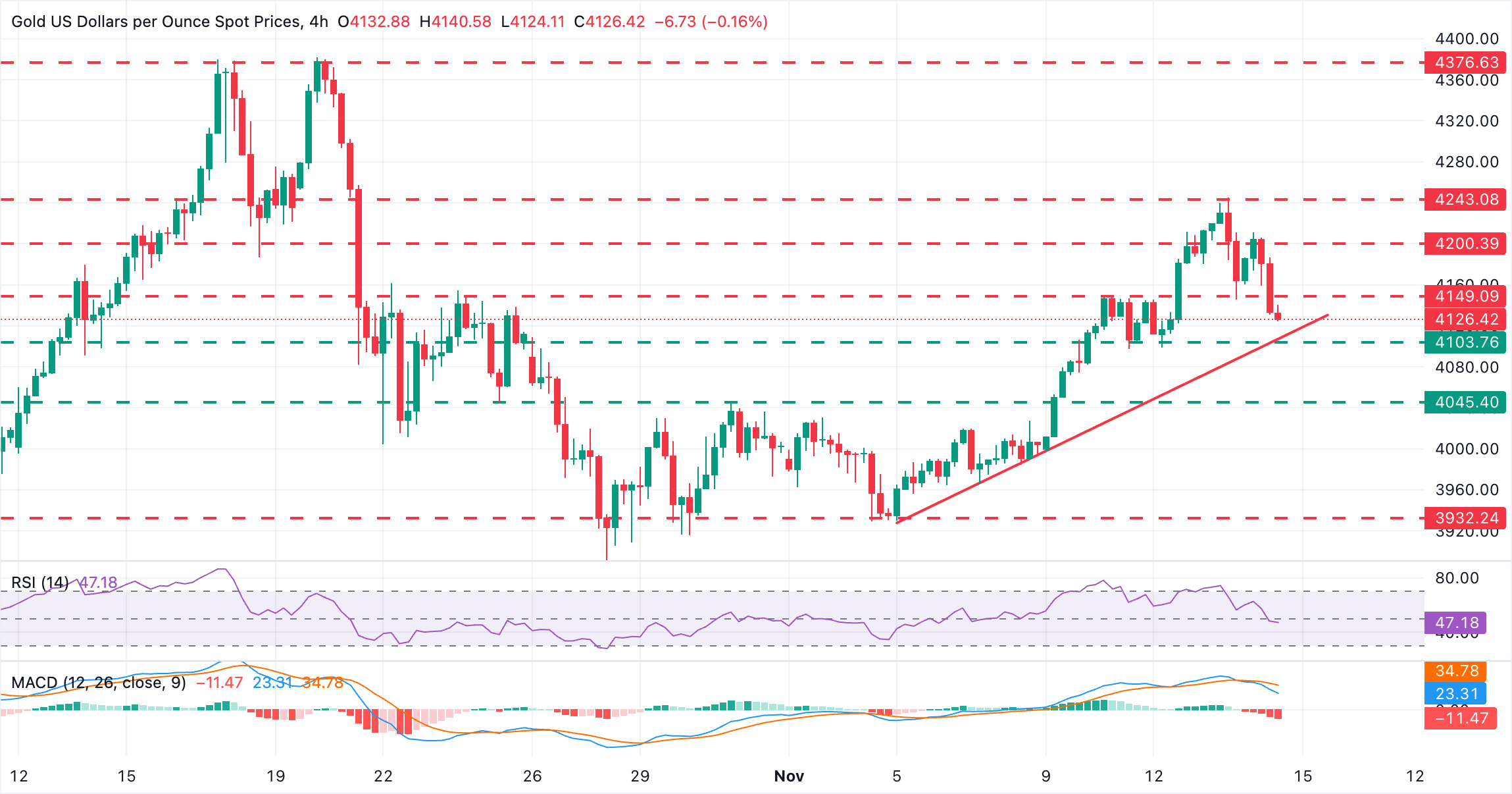Gold Price Forecast: XAU/USD dips below $4,150 as the US Dollar picks up
- Gold extends losses below $4.150 with the US Dollar supported amid higher risk aversion.
- Dwindling hopes of a December Fed cut are weighing on precious metals on Friday.
- XAU/USD is under growing bearish pressure, approaching an important support level at $4,100.
Gold (XAU/USD) is heading lower on a choppy trading session on Friday, weighed by a firmer US Dollar amid the risk-averse sentiment. The Precious metal has broken below a previous resistance area, at $4,150 ahead of the US session opening, reaching intraday lows near $4,130 so far.
Furthermore
The Greenback is trimming some losses on Friday as market sentiment soured with European equity markets in the red, following the track of Wall Street and Asia. Furthermore, the hawkish comments from Fed officials have prompted investors to pare back hopes of Fed easing in December, which has provided some support to the US Dollar.
Technical Analysis: Bears eye the $4,100 support level

From a technical perspective, the lower high printed earlier on Thursday, coupled with the dip on the 4-hour Relative Strength Index (RSI), which is flirting with the 50 level at the time of writing, and the bearish cross on the Moving Average Convergence Divergence (MACD), is acting as a warning for buyers.
Below $4,150 (November 11 high, Thursday’s low), the next support level is at the $4,100 area, where the November 11,12 lows meet the trendline support from early November lows. Further down, a previous resistance area at $4,050 (October 31 highs) will come into focus.
Immediate resistance is at the daily high of $4,210, ahead of Thursday’s high, near $4,245. Bulls would need to break above these levels to resume the upside trend and shift their views towards the all-time highs around $4,380 (the highs of October 20 and 21).
Gold FAQs
Gold has played a key role in human’s history as it has been widely used as a store of value and medium of exchange. Currently, apart from its shine and usage for jewelry, the precious metal is widely seen as a safe-haven asset, meaning that it is considered a good investment during turbulent times. Gold is also widely seen as a hedge against inflation and against depreciating currencies as it doesn’t rely on any specific issuer or government.
Central banks are the biggest Gold holders. In their aim to support their currencies in turbulent times, central banks tend to diversify their reserves and buy Gold to improve the perceived strength of the economy and the currency. High Gold reserves can be a source of trust for a country’s solvency. Central banks added 1,136 tonnes of Gold worth around $70 billion to their reserves in 2022, according to data from the World Gold Council. This is the highest yearly purchase since records began. Central banks from emerging economies such as China, India and Turkey are quickly increasing their Gold reserves.
Gold has an inverse correlation with the US Dollar and US Treasuries, which are both major reserve and safe-haven assets. When the Dollar depreciates, Gold tends to rise, enabling investors and central banks to diversify their assets in turbulent times. Gold is also inversely correlated with risk assets. A rally in the stock market tends to weaken Gold price, while sell-offs in riskier markets tend to favor the precious metal.
The price can move due to a wide range of factors. Geopolitical instability or fears of a deep recession can quickly make Gold price escalate due to its safe-haven status. As a yield-less asset, Gold tends to rise with lower interest rates, while higher cost of money usually weighs down on the yellow metal. Still, most moves depend on how the US Dollar (USD) behaves as the asset is priced in dollars (XAU/USD). A strong Dollar tends to keep the price of Gold controlled, whereas a weaker Dollar is likely to push Gold prices up.